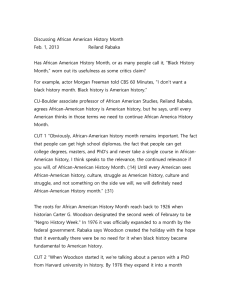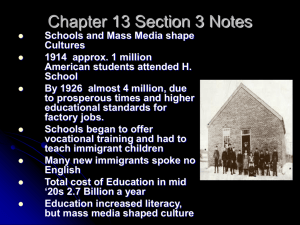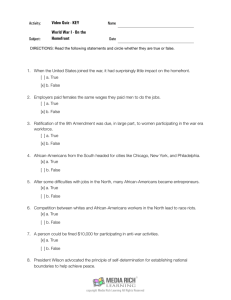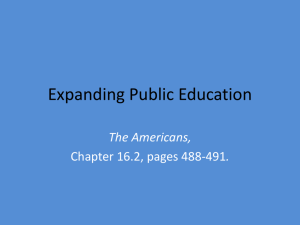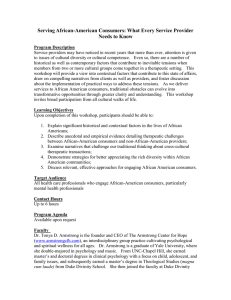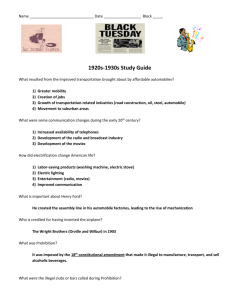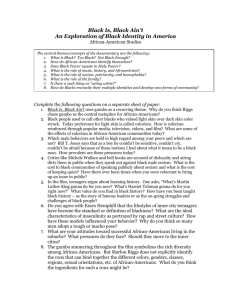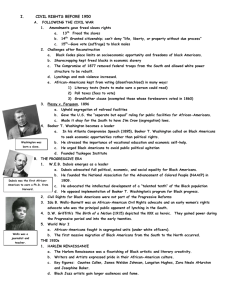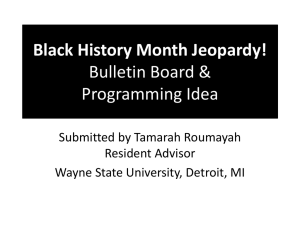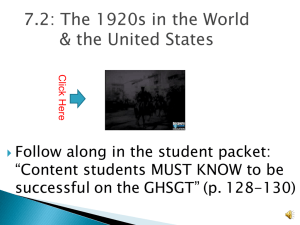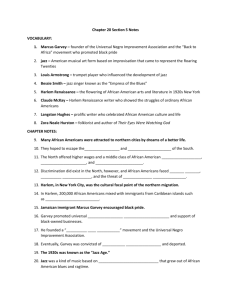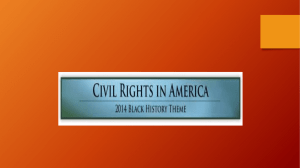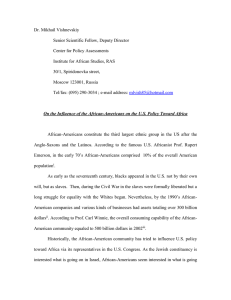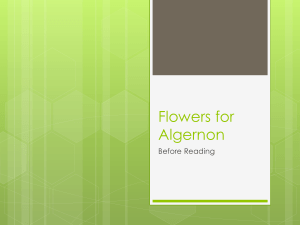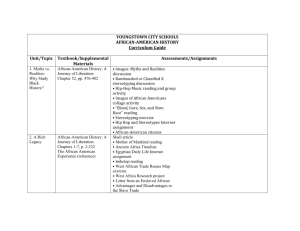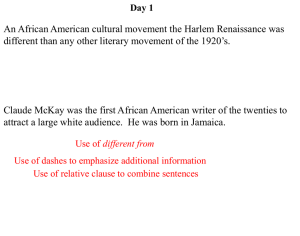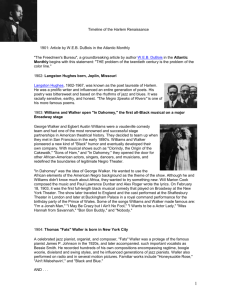The Harlem Renaissance
advertisement
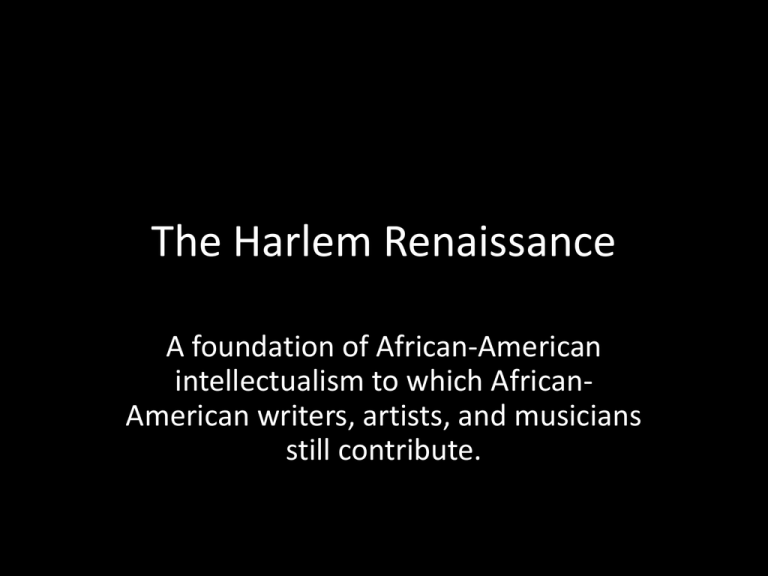
The Harlem Renaissance A foundation of African-American intellectualism to which AfricanAmerican writers, artists, and musicians still contribute. Quick-write • The great migration sent hundreds of thousands of African-Americans north to the big cities. How do you think the people of the north embraced this? Voices in the 1920’s • Between 1910 & 1920 hundreds of thousands of African Americans had travelled from the South to the big cities. • Not everyone was welcoming and in 1919 race riots were common. Quick-write • What options might African-Americans have when facing similar discriminations in the north? African-American Goals • The newly formed NAACP urged African-Americans to protest racial violence. • W.E.B. DuBois would often lead marches to end violence against African Americans. • James Weldon Johnson of the NAACP fought for legislation to protect African Americans. The UNIA • Marcus Garvey, an immigrant from Jamaica, believed that African Americans should build a separate society. • He founded the Universal Negro Improvement Association (UNIA). • He urged many to return to Africa, though originally popular the movement died out by the mid 20’s. Quick-write • Why do you think UNIA movement died out so quickly? Renaissance • The Harlem Renaissance, was a literary and artistic movement celebrating African-American culture. • Claude McKay, a novelist used militant verses to encourage resistance. • Langston Hughes the best known from the era described the difficult lives of the working-class African American. African-American Performers • Many African-Americans like Paul Robeson (son of a former slave) became actors and performers. • Louis Armstrong made jazz a global phenomenon. Jazz Explodes • The likes of Duke Ellington started to take their 10 piece orchestra to the famed Cotton Club in NYC. • Women got involved as well, Bessie Smith a female blues singer probably had the best voice of the decade.
